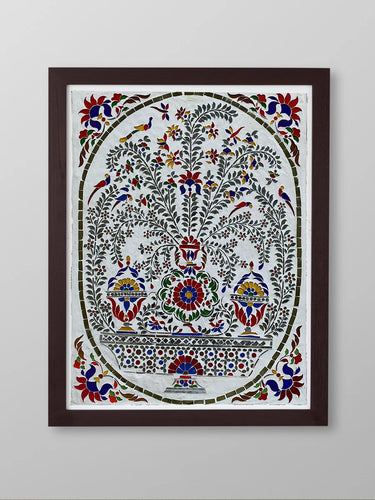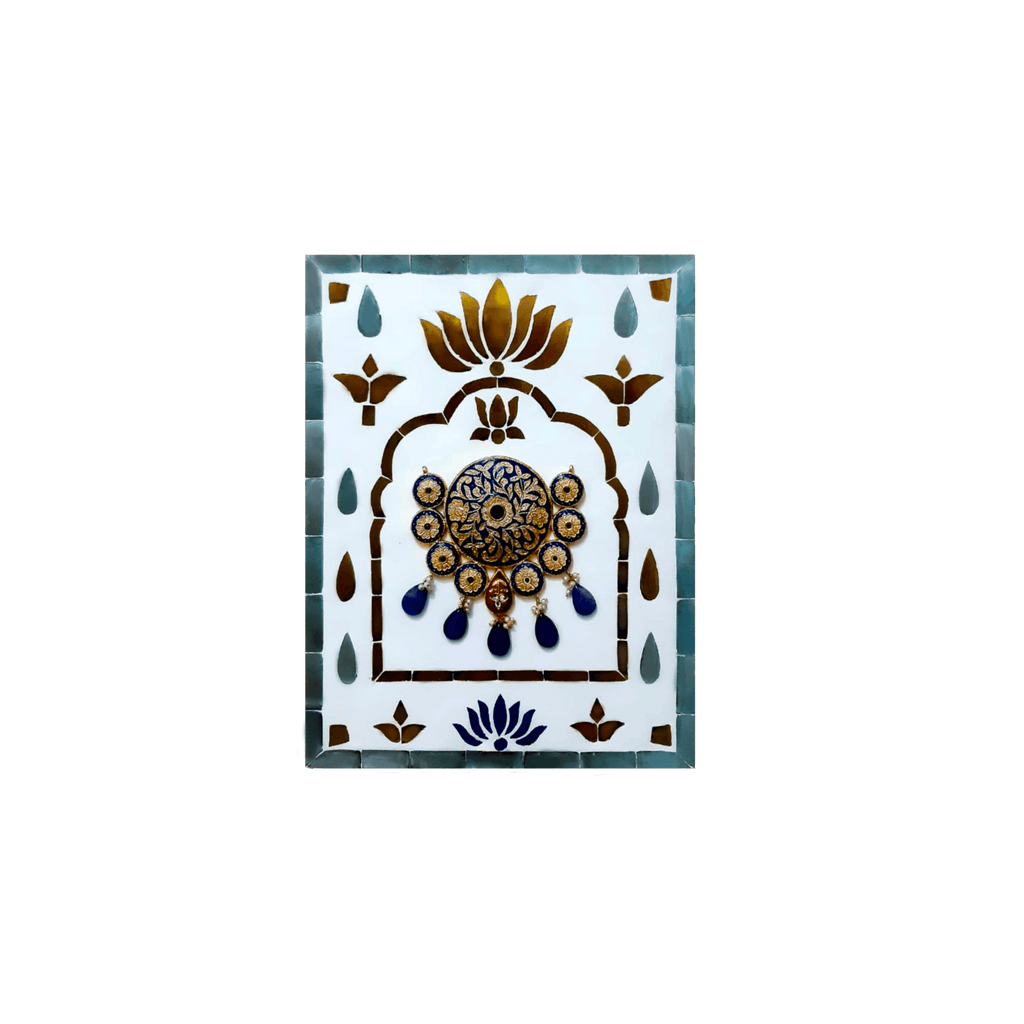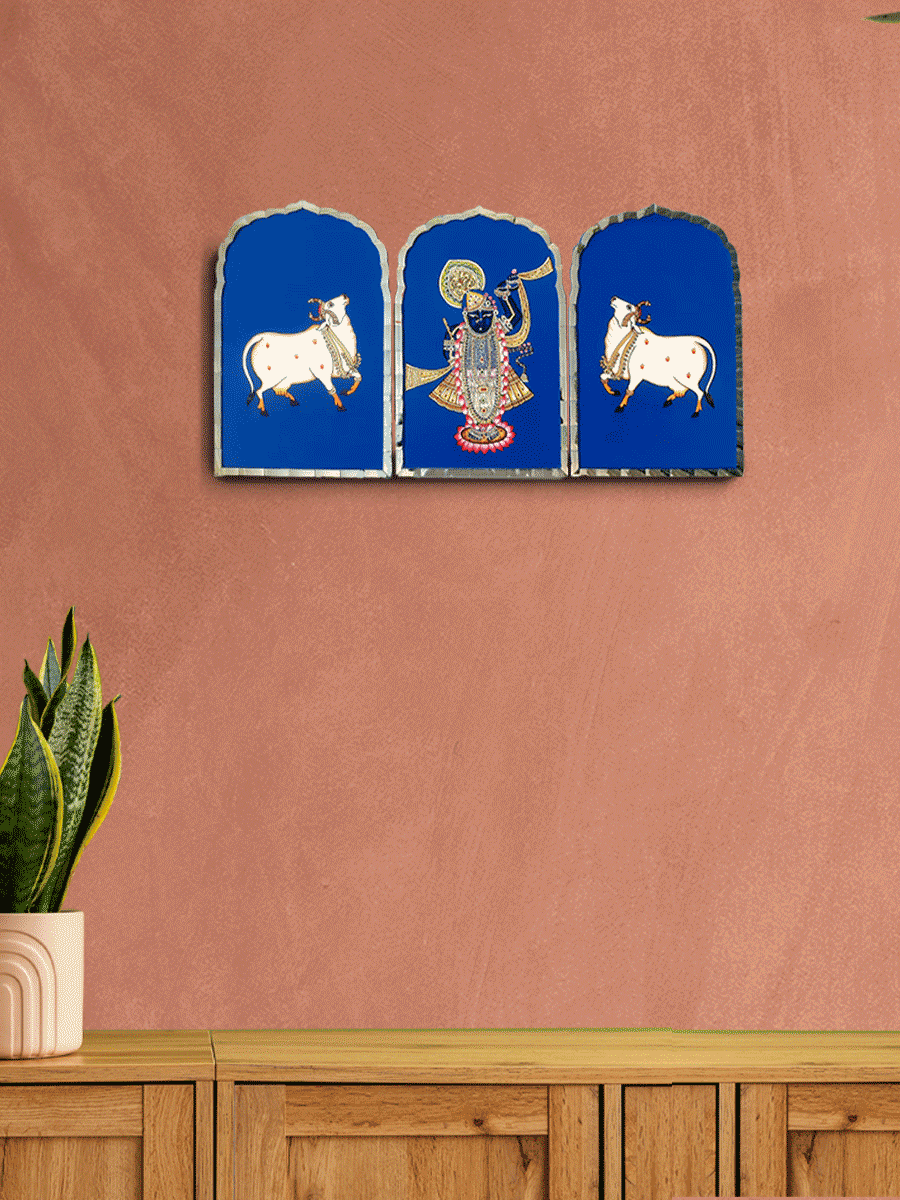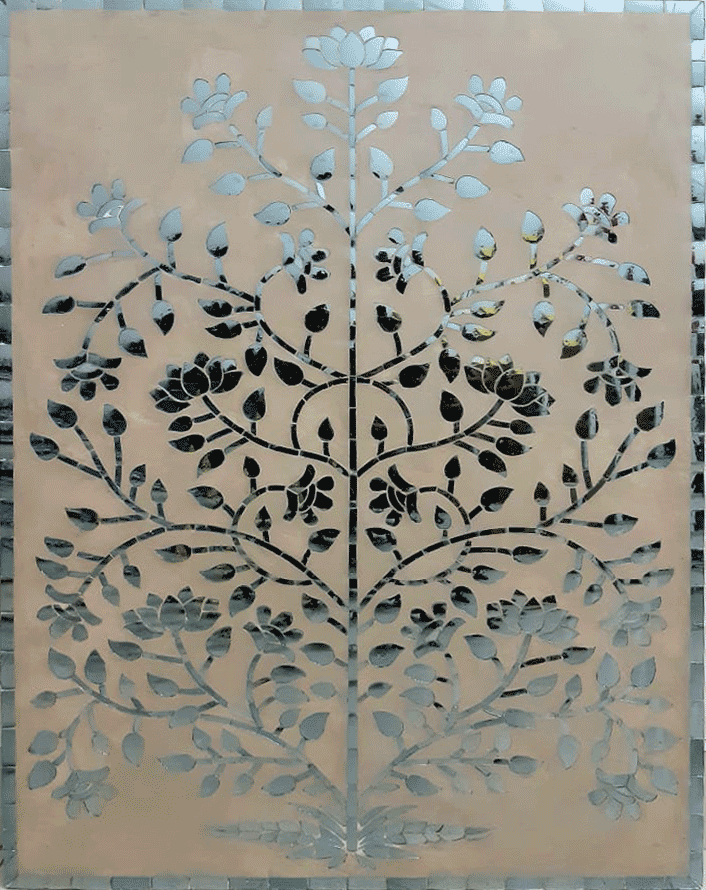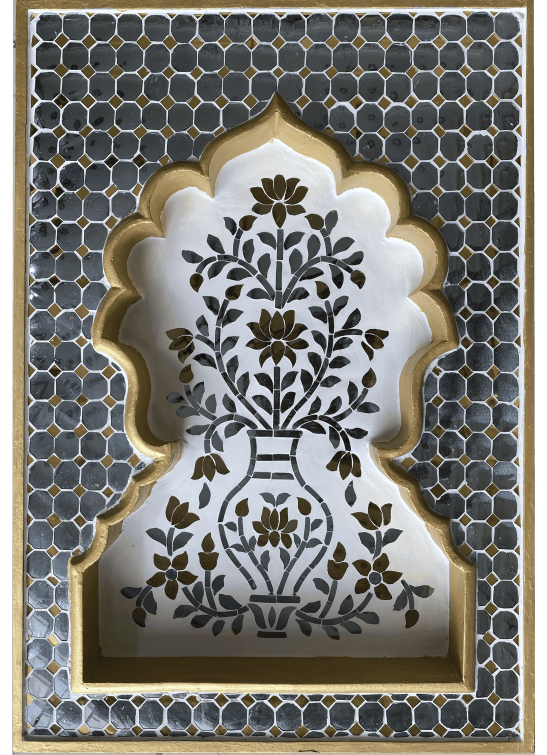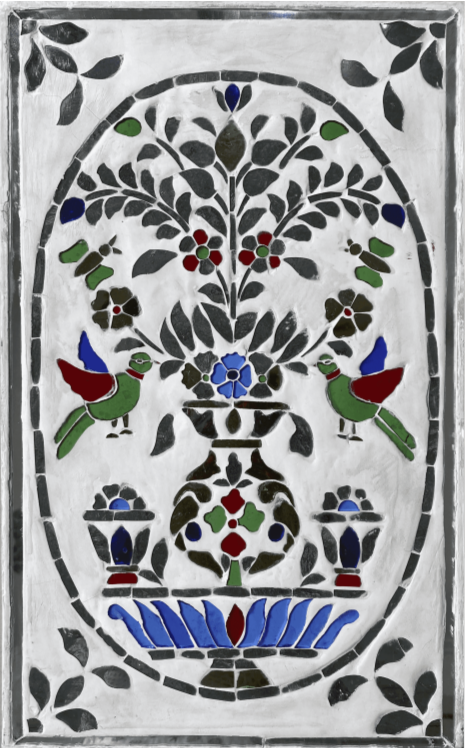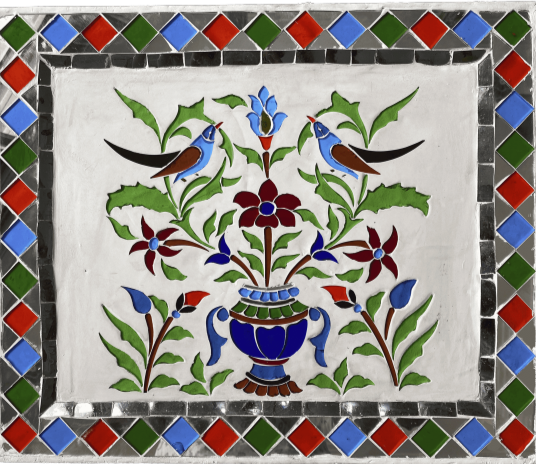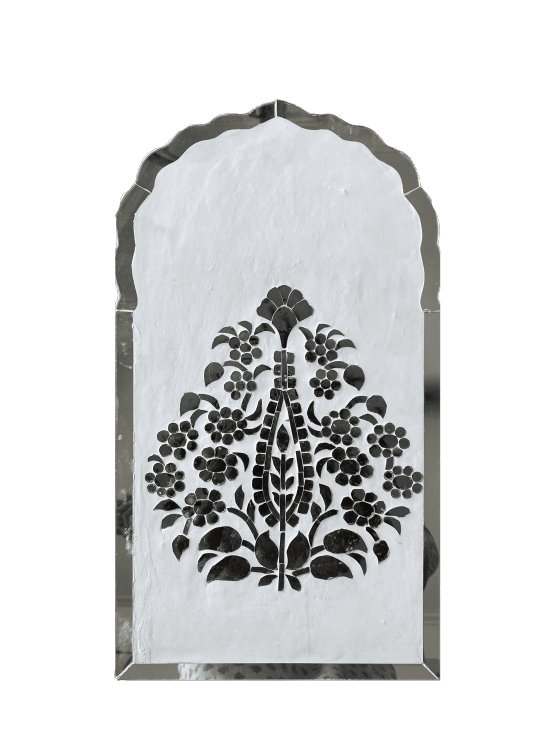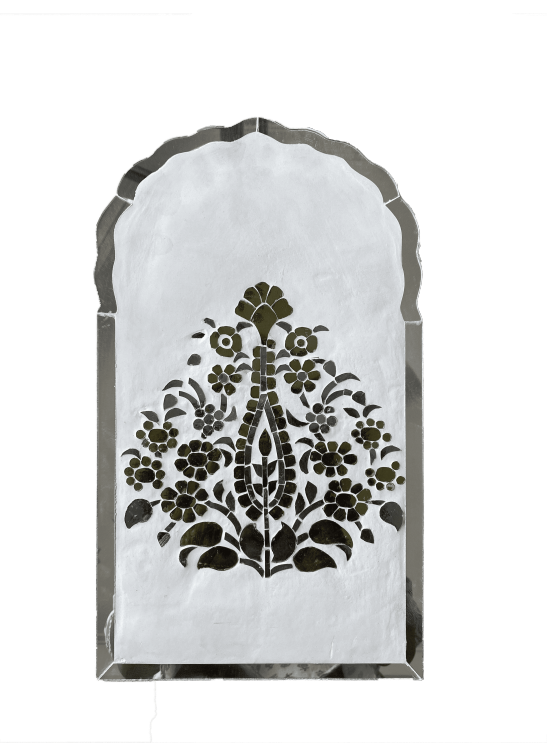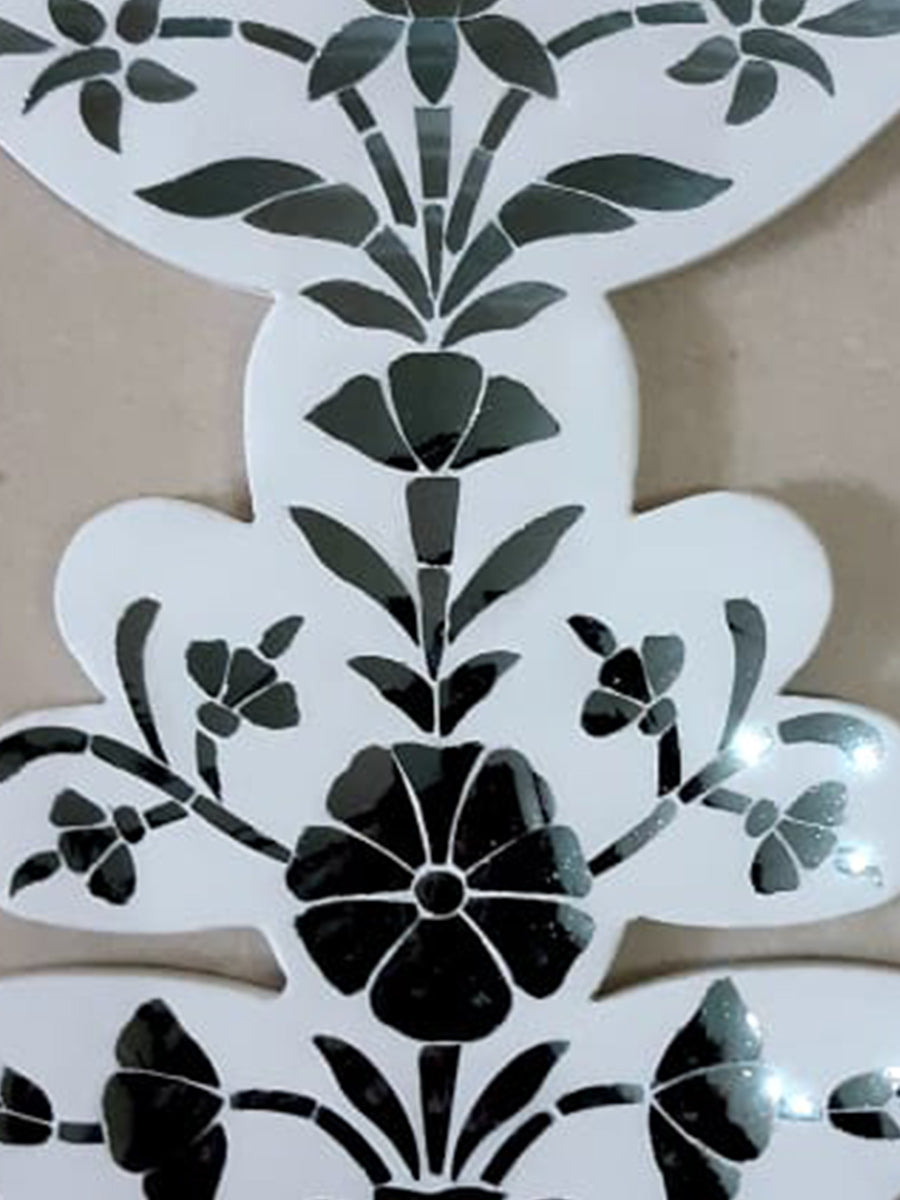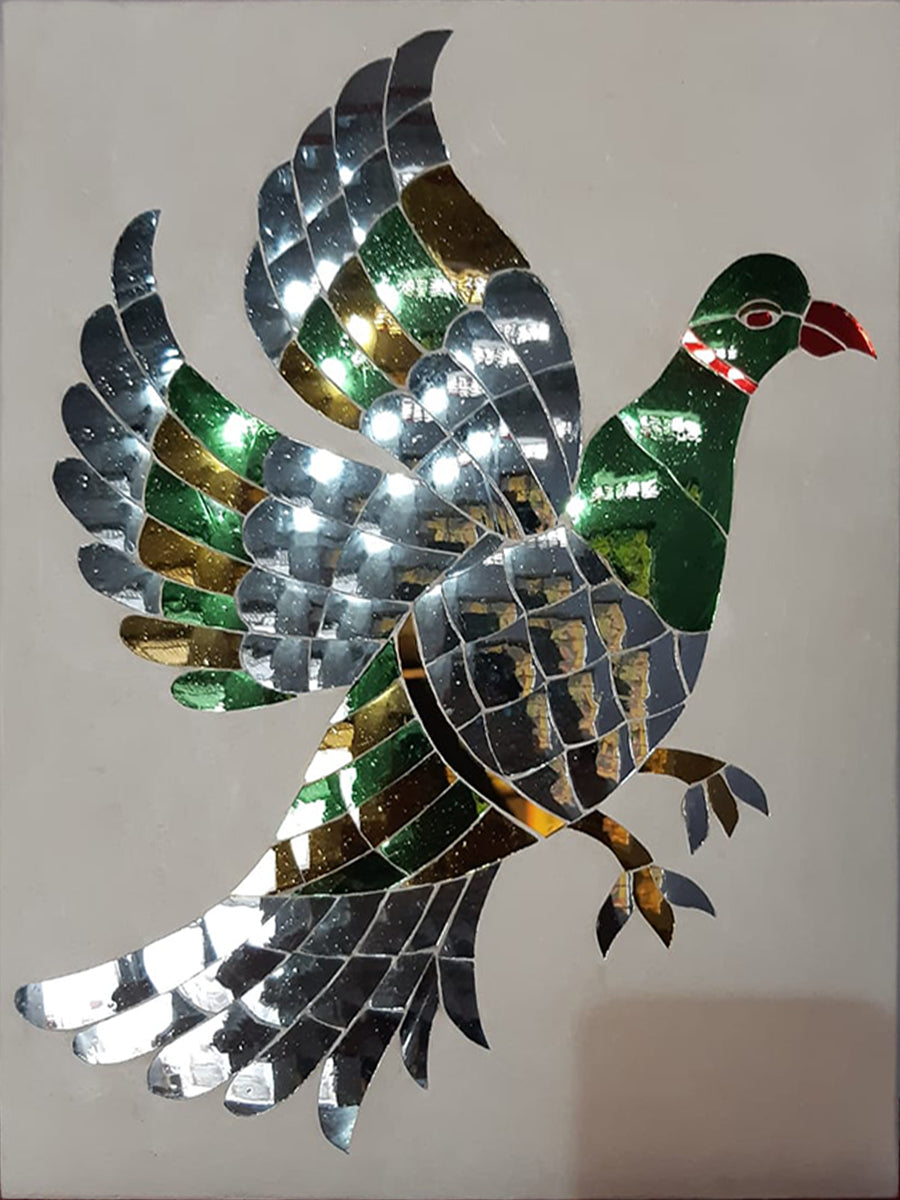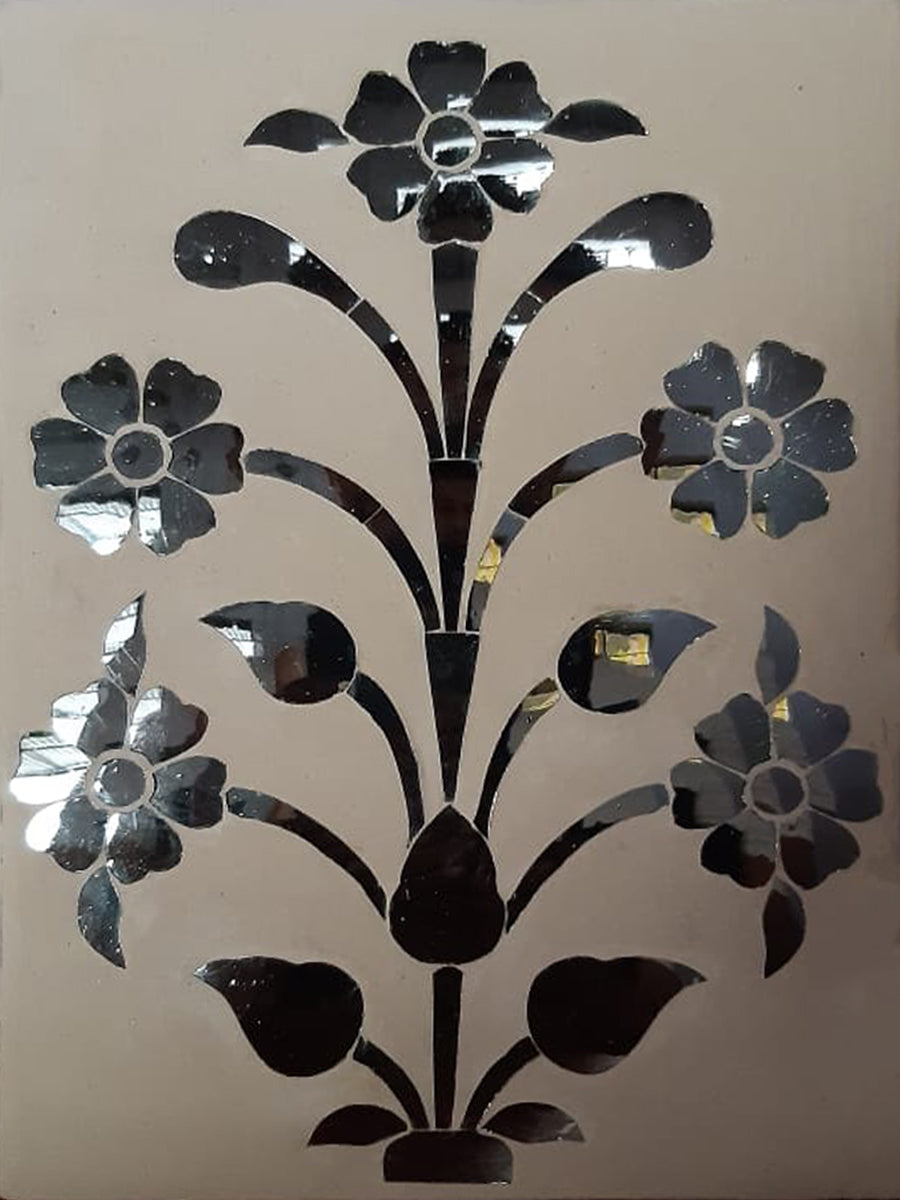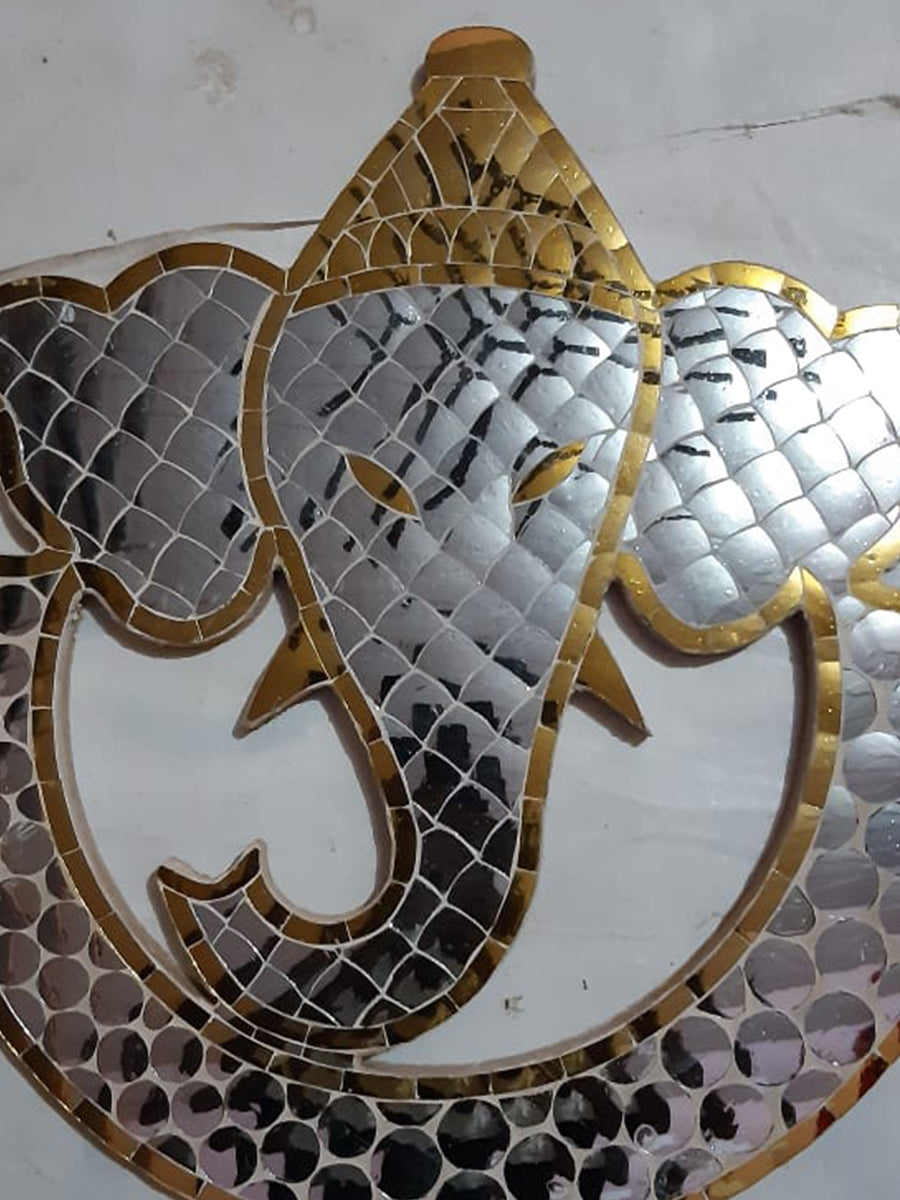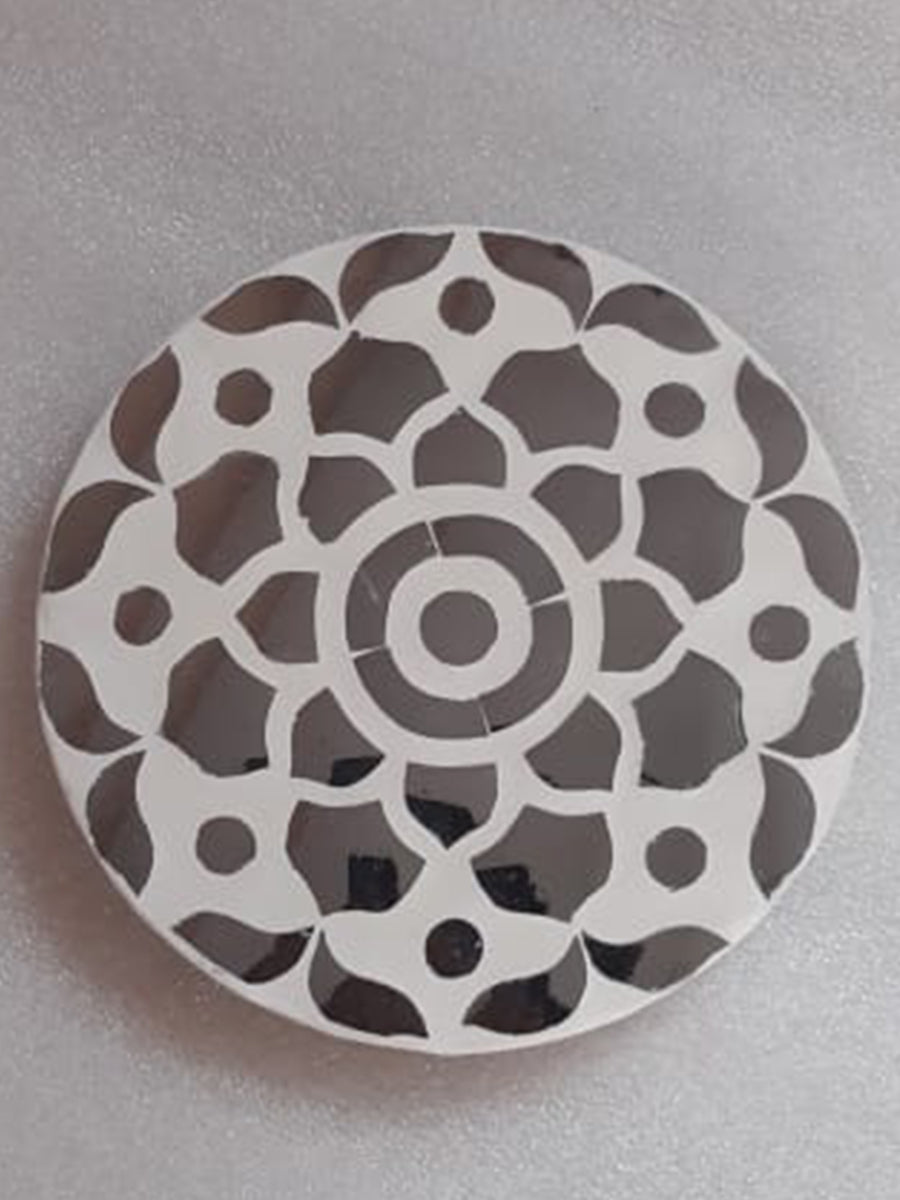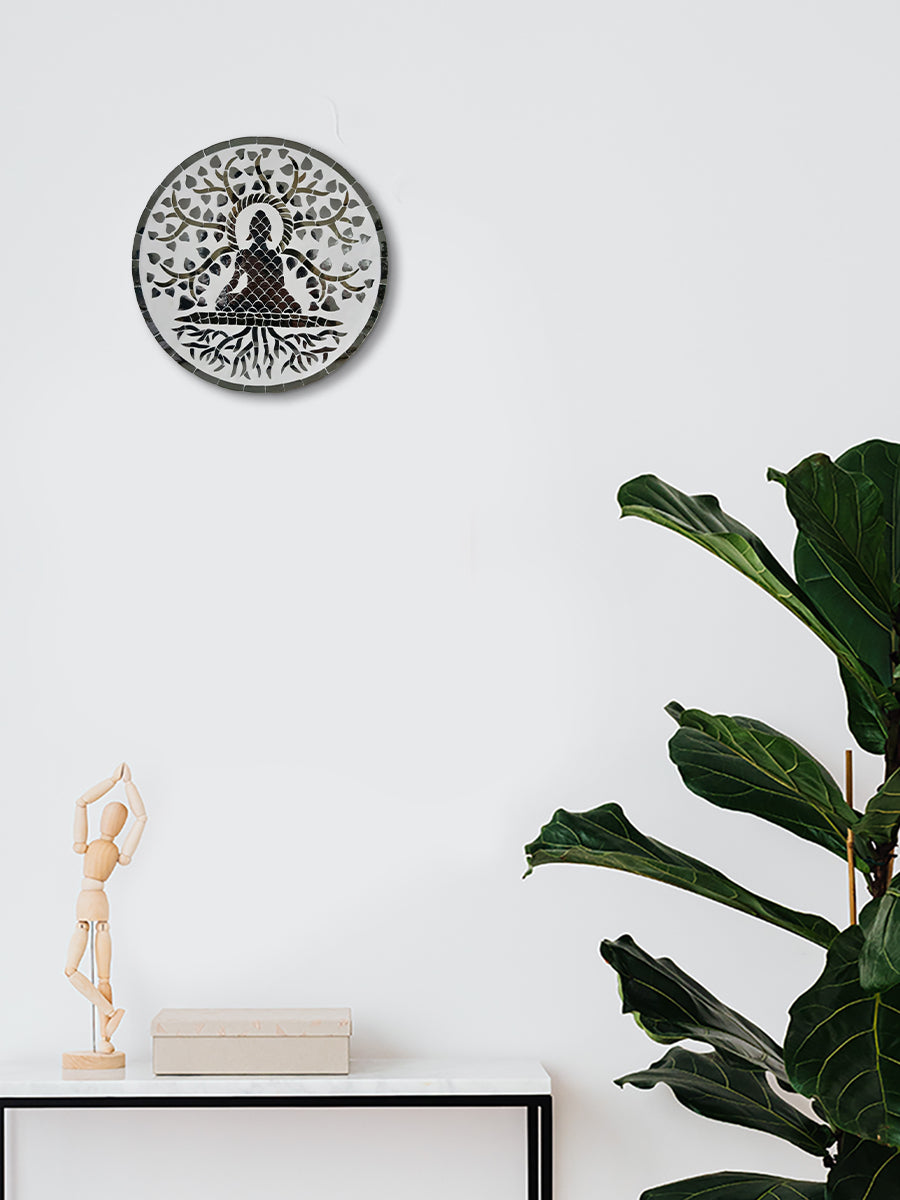A dazzling tradition of Rajasthani craftsmanship, Thikri Art is the ancient art of mirror inlay, transforming surfaces into luminous, intricate compositions. Once reserved for the palaces and Sheesh Mahals of royalty, this stunning mirror work of Rajasthan is now celebrated across decorative art, interiors, and furniture.
At MeMeraki, we bring you authentic Thikri artwork, handcrafted by master artisans from Jaipur and other regions of Rajasthan, preserving centuries-old techniques while adapting them to contemporary aesthetics.
What is Thikri Art?
Thikri Art is a traditional form of glass mosaic work, where mirrors are carefully hand-cut and arranged into symmetrical, often geometric or floral, patterns. Unlike general mirror embroidery or embellishment, Thikri work is distinct in its scale, precision, and artistry—often transforming entire walls or furniture pieces into radiant compositions that reflect light beautifully.
History and Cultural Significance
The roots of Thikri work trace back to Persian influences brought to India centuries ago. Over time, the art flourished in Rajasthan, where it adorned royal palaces, temples, and havelis.
A famous cultural reference is the legendary Bollywood film Mughal-e-Azam (1960), where actress Madhubala dances in the iconic Sheesh Mahal. The captivating effect of countless reflections was crafted by Thikri artisans, demonstrating the immersive beauty of this traditional form.
Today, Thikri work in Jaipur continues to evolve, gracing both heritage and contemporary spaces while honoring its royal legacy.
Technique and Craftsmanship
Creating a piece of Thikri art is a meticulous process that involves:
-
High-quality glass mirrors cut into desired shapes—squares, petals, or geometric patterns
-
Base materials such as plaster, lime, or wood
-
Natural adhesives like lime mortar or gum Arabic
-
Symmetrical placement of each mirror to form mesmerizing patterns
The beauty of Thikri work lies in its precision—mirrors are placed to catch and reflect light in rhythmic patterns, resulting in a spellbinding interplay of brightness and depth.
Design Styles and Motifs
Early Thikri art featured floral and ornamental patterns, but modern interpretations have expanded to include:
-
Geometric motifs for minimalist spaces
-
Botanical and animal patterns
-
Deity-inspired designs for spiritual or cultural resonance
-
Fusion patterns that blend traditional craftsmanship with modern design sensibilities
Whether used in wall panels, mirrors, furniture, or installations, Thikri artwork adds a touch of heritage elegance to any space.
Why Choose Thikri Work from MeMeraki?
-
Authentic craftsmanship from Jaipur’s leading Thikri artisans
-
Use of high-quality glass and traditional materials
-
Bespoke designs available for interiors, wall panels, and decor
-
Suitable for both traditional and modern homes
-
Sustainable, long-lasting, and culturally rooted
At MeMeraki, we collaborate with artisans to bring custom Thikri art into your homes, tailored to your taste and space requirements.
FAQs – Thikri Art & Mirror Work
Q1. How does Thikri Art differ from other mirror work?
Unlike common mirror embellishments, Thikri work features precisely cut mirrors arranged in symmetrical patterns. It uses high-quality glass and involves detailed craftsmanship, often covering entire surfaces.
Q2. What is the origin of Thikri artwork?
Thikri art originated from Persian influences and evolved in Rajasthan, especially in Jaipur, where it became integral to royal architecture.
Q3. How do I maintain Thikri art?
Clean gently with a soft, dry cloth. Avoid harsh chemicals or water on the mirror surface. With proper care, Thikri mirror work remains vibrant for years.
Q4. Can I customize Thikri work for my space?
Yes! At MeMeraki, we offer custom Thikri artwork—whether it’s a mural, furniture accent, or wall décor, we tailor designs to your aesthetic and size needs.
Q5. Where is Thikri work most commonly found?
You’ll often find Thikri work in Jaipur, adorning walls of havelis, palaces like Sheesh Mahal, and now modern interiors and luxury spaces across India.
Show Less
